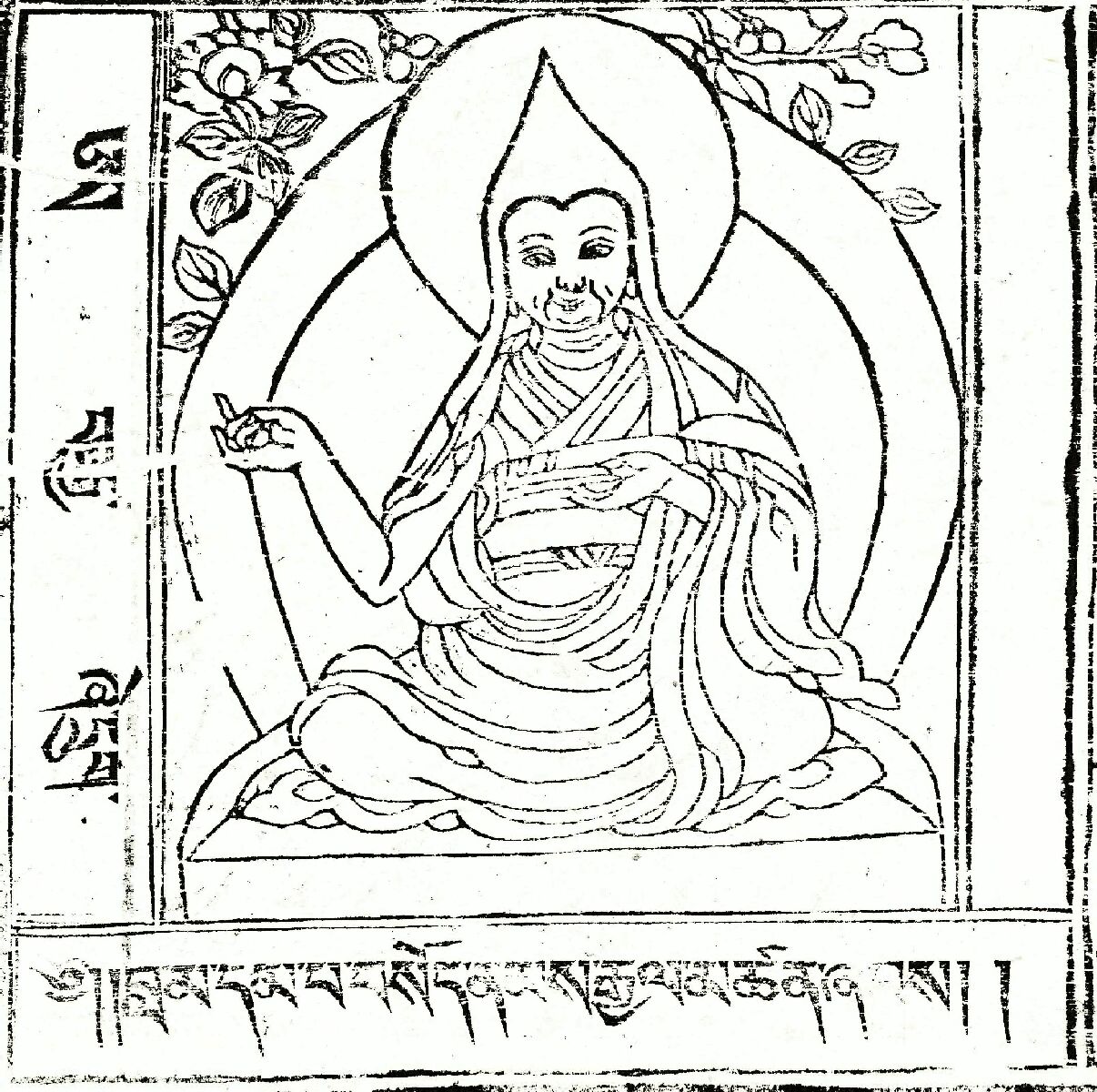Lama Dampa Sonam Gyeltsen (bla ma dam pa bsod nams rgyal mtshan, 1312-1375) was born in 1312 at Zalu Kang sar (za lu khang gsar), into one of the ruling families of the Rinchen Gang Residence (rin chen sgang blab rang) of Sakya monastery. His father was Dagchen Zangpo Pel (bdag can bzang pod pel) and his mother was Jomo Lugkye (jo mo lug skyes). Later in life she became a nun and her name was changed to Machik zonbu bum (ma gcig gzon bu 'bum). Her family was closely tied to the Sakya Khon family through several successive marriage alliances.
Sonam Gyeltsen was ordained at the age of seventeen by Sonam Drakpa (bsod names grags pa, d.u.) and Pelden Senge (dpal ldan seng ge, d.u.) who gave him the name by which he is known. He also studied with Namkha Lekpai Gyeltsen (nam mkha' legs pa'i rgyal mtshan, 1290-1364), Dolpopa Sherab Gyeltsen (dol po pa shes rab rgyal mtshan, 1292-1361), Gyelse Tokme Zangpo (rgyal sras thogs med dpal bzang po, 1295-1369), and Buton Rinchen Drub (bu ston rin chen grub, 1290-1364) who gave him the Kālacakra empowerment.
Sonam Gyeltsen's seat was the Zhitog Residence (bzhi thog bla brang) at Sakya, where he was appointed Abbot in 1344, an honor that was accompanied by valuable gifts and the conferral of imperial seals. The prestigious post effectively made him the fourteenth Sakya throneholder, or trizin (tri dzin). One of his biographies suggests that he was named National Preceptor (Chinese: guoshi) to the Mongol court at the same time. He was invited to visit the Mongol court but always refused, reportedly due to an ailment with his feet. Sonam Gyeltsen was more inclined to studying, teaching, and meditative retreat than he was to politics and the duties of a diplomat, which his position entailed. Nevertheless, during the short time he headed Sakya (probably only until 1348) he is recorded to have done a great deal to mediate in disputes between various infighting factions at Sakya, and between Tai Situ Changchub Gyeltsen (t'ai si tu byang chub rgyal mtshan, 1302-1364) and Tai Situ's rival's at Sakya. Whether he was forcibly replaced or willingly stepped down from his post to pursue religious and scholarly interests, Sonam Gyeltsen lived in partial exile from the political center at Sakya from about 1348 onwards.

 Sonam
Gyeltsen was a prolific author, although many of his writings were
never printed. Most famously, he was the author of the genealogy, Gyal
rab sal ba'i me long (rgyal rabs sal ba'i me long), commonly translated
as The Clear Mirror: A Royal Genealogy. He wrote on various tantric subjects, particularly the Kālacakratantra, and composed a commentary on Shantideva's Bodhicharyavatara. His
influential writings on the Lamdre (lam 'bras) tradition were collected
in a volume called the Lamdre Ponag (lam 'bras pod nag), one of the
first major written works on Lamdre. He also sponsored the first edition of the collected works of the Five Patriarchs of Sakya (sa skya gong ma lnga).
Sonam
Gyeltsen was a prolific author, although many of his writings were
never printed. Most famously, he was the author of the genealogy, Gyal
rab sal ba'i me long (rgyal rabs sal ba'i me long), commonly translated
as The Clear Mirror: A Royal Genealogy. He wrote on various tantric subjects, particularly the Kālacakratantra, and composed a commentary on Shantideva's Bodhicharyavatara. His
influential writings on the Lamdre (lam 'bras) tradition were collected
in a volume called the Lamdre Ponag (lam 'bras pod nag), one of the
first major written works on Lamdre. He also sponsored the first edition of the collected works of the Five Patriarchs of Sakya (sa skya gong ma lnga). Lama Dampa is credited with requesting Dolpopa Sherab Gyalten (dol po pa shes rab rgyal mtshan, 1292-1361) to write one his more influential works, the Fourth Council (bka' bsdu bzhi pa). Some time between 1352 and 1355 Lama Dampa visited with Dolpopa at Jonang Monastery where the two engaged in extensive discussions on zhentong (gzhan stong).
Sonam Gyeltsen was a master in the Ngok lineage (rngog lugs) of the Prajñāpāramitā. His students included Rendawa Zhonnu Lodro (red mda' ba gzhon nu blo gros, 1349-1412); Tsongkhapa Lobzang Drakpa (tsong kha pa blo bzang grags pa, 1357-1419) whom he taught at Nyetang (snye thang); and Longchenpa Rabjam Drime Ozer (klong chen pa rab 'byams pa dri med 'od zer, 1308-1364). He also taught and conferred initiations on Tai Situ Changchub Gyeltsen, the military and political figure whose reign initiated the Pakmodrupa (Phag mo dru pa) Dynasty that supplanted Sakya-Mongol rule in Tibet.

